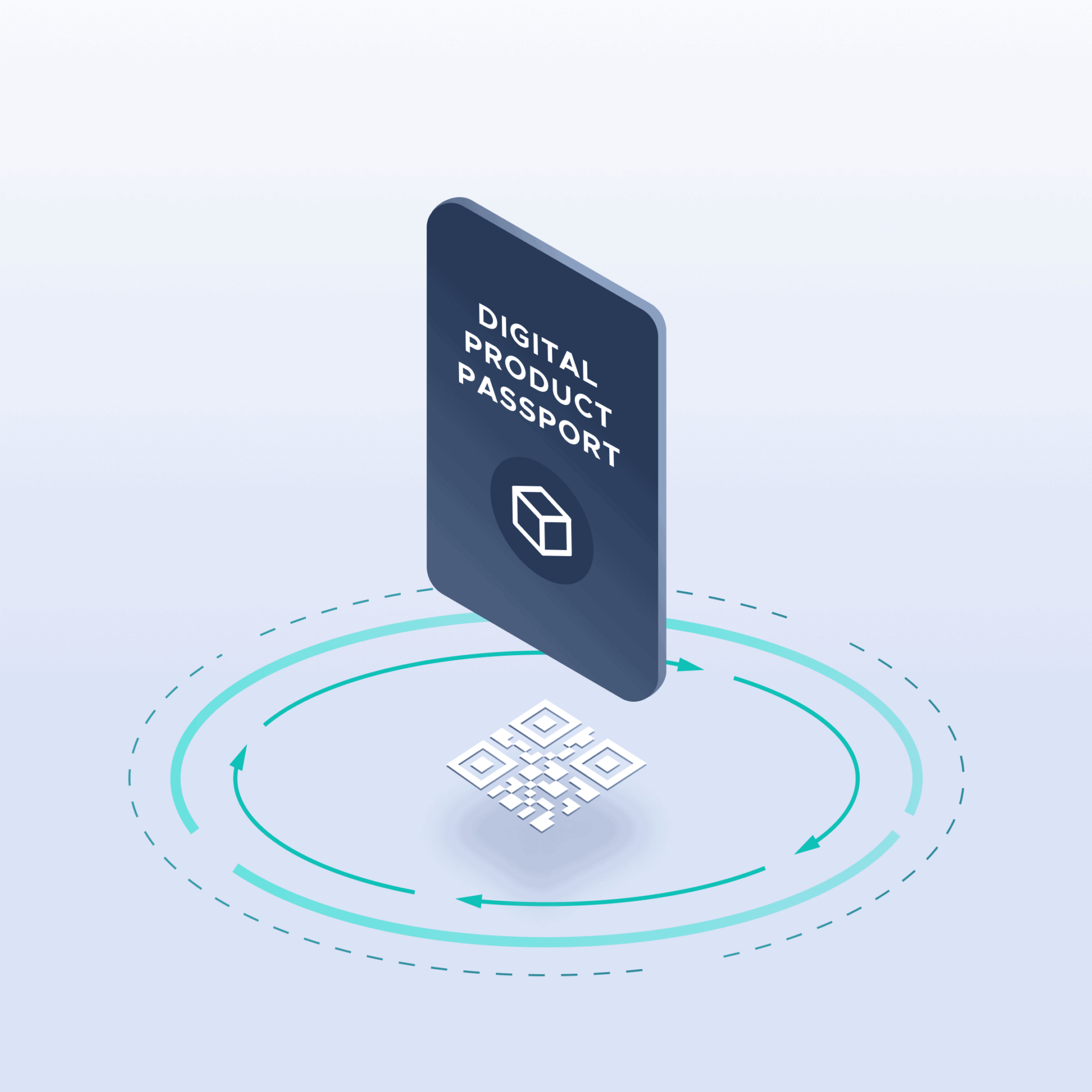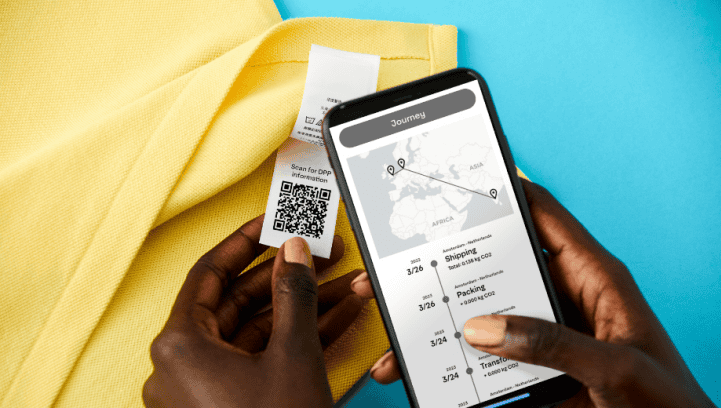What is the digital product passport?
Explore the digital solution that provides consumers with product life cycle information.
The Digital Product Passport (DPP) in fashion
The Green Deal has brought significant changes in the fashion industry, introducing – for example – the Ecodesign for Sustainable Products Regulation (ESPR), as part of the Sustainable Product Initiative, which aims to foster environmentally sustainable and circular products.
The ESPR for Textiles will allow for the setting of a wide range of eco-design requirements, such as:
-
Product durability, reusability, upgradability, and reparability
-
Minimizing substances that hinder circularity
-
Improving energy and resource efficiency
-
Increasing recycled content
-
Encouraging remanufacturing and recycling
-
Reducing carbon and environmental footprints
-
Information requirements, including the implementation of the Digital Product Passport (DPP)
What is the digital product passport?
The Digital Product Passport (DPP) is a digital record that compiles and displays detailed information about a product throughout its entire life cycle, it covers everything from raw material sourcing to the full production process, and enables stakeholders, including consumers, to better understand the materials used and their environmental impact.

What’s in the Digital Product Passport (DPP)?
The Digital Product Passport (DPP) will contain key product details, including a unique product identifier, compliance documentation, and information on substances of concern. Additionally, it will provide user manuals, safety instructions, and disposal guidelines.
Key information on the Digital Product Passport (DPP)?
Nr. 1
General Product Information
Identification code, product weight, manufacturing location, and more.
Nr. 2
Material Origins
The source of materials used in production, including their carbon footprint.
Nr. 3
Production Process
Manufacturer details, production methods, relevant certifications, and sustainability practices.
Nr. 4
Logistics & Transportation
Shipping methods used, transportation emissions, and the environmental footprint of logistics.
Nr. 5
Maintenance & Repairs
Guidelines for repair, care instructions, product warranties, and user manuals.
Nr. 6
End-of-Life Management
Disassembly instructions, recycling guidelines, and end-of-life options.

What will be the requirements of the Digital Product Passport (DPP)?
Nr. 1
The DPP must be linked through a data carrier to a unique product identifier
Nr. 2
The data carrier must be physically present on the product, its packaging, or the accompanying documentation
Nr. 3
The data carrier and the unique product identifier must comply with the ISO/IEC 15459:2015 standard
Nr. 4
All information included in the DPP must be based on open standards, developed in an interoperable format, and must be readable, structured, and searchable
Nr. 5
The information contained in the DPP must refer to the product model, batch, or item

Why is the Digital Product Passport (DPP) so important?
The DPP serves as a bridge between increasing consumer demand for transparency and the current lack of reliable, accessible product data. This open and transparent approach aligns with sustainability goals by making detailed product information publicly available. It empowers consumers to make informed choices, encourages industry-wide collaboration, and supports the circular economy by improving data sharing standards.
Key Benefits of the Digital Product Passport (DPP):
Nr. 1
Product Authenticity & Ownership
It provides the buyer with proof of ownership and authenticity.
Nr. 2
Sustainability Commitment
The DPP offers certifications for raw materials, environmental impact data, and sustainable recycling practices.
Nr. 3
Supply Chain Improvement
Companies can take actionable steps to enhance sustainability across their entire supply chain.
Nr. 4
Consumer Engagement
By establishing a direct relationship with consumers, DPPs open up a wealth of possibilities for tailored marketing strategies and consumer feedback.
Nr. 5
Global Insights
Brands can gain valuable insights into global product and consumer interactions, enabling them to refine their sustainability practices.

What are the Goals of the Digital Product Passport (DPP)?
Nr. 1
Promote Sustainable Production Practices
By providing transparency, DPPs encourage manufacturers to adopt more sustainable practices.
Nr. 2
Extend Product Lifecycles
The DPP enables companies to create products designed for durability and reparability, while offering consumers the information needed to optimize usage and prolong the lifespan of their products.
Nr. 3
Empower Consumers
Consumers can make more sustainable, informed purchasing decisions, which drives demand for eco-friendly products.
Nr. 4
Facilitate Circular Economy Transition
DPPs help optimize material and energy efficiency, contributing to a more sustainable production and consumption model.
Nr. 5
Ensure Regulatory Compliance
The DPP helps authorities monitor compliance with evolving sustainability regulations and standards, ensuring a more accountable marketplace.


